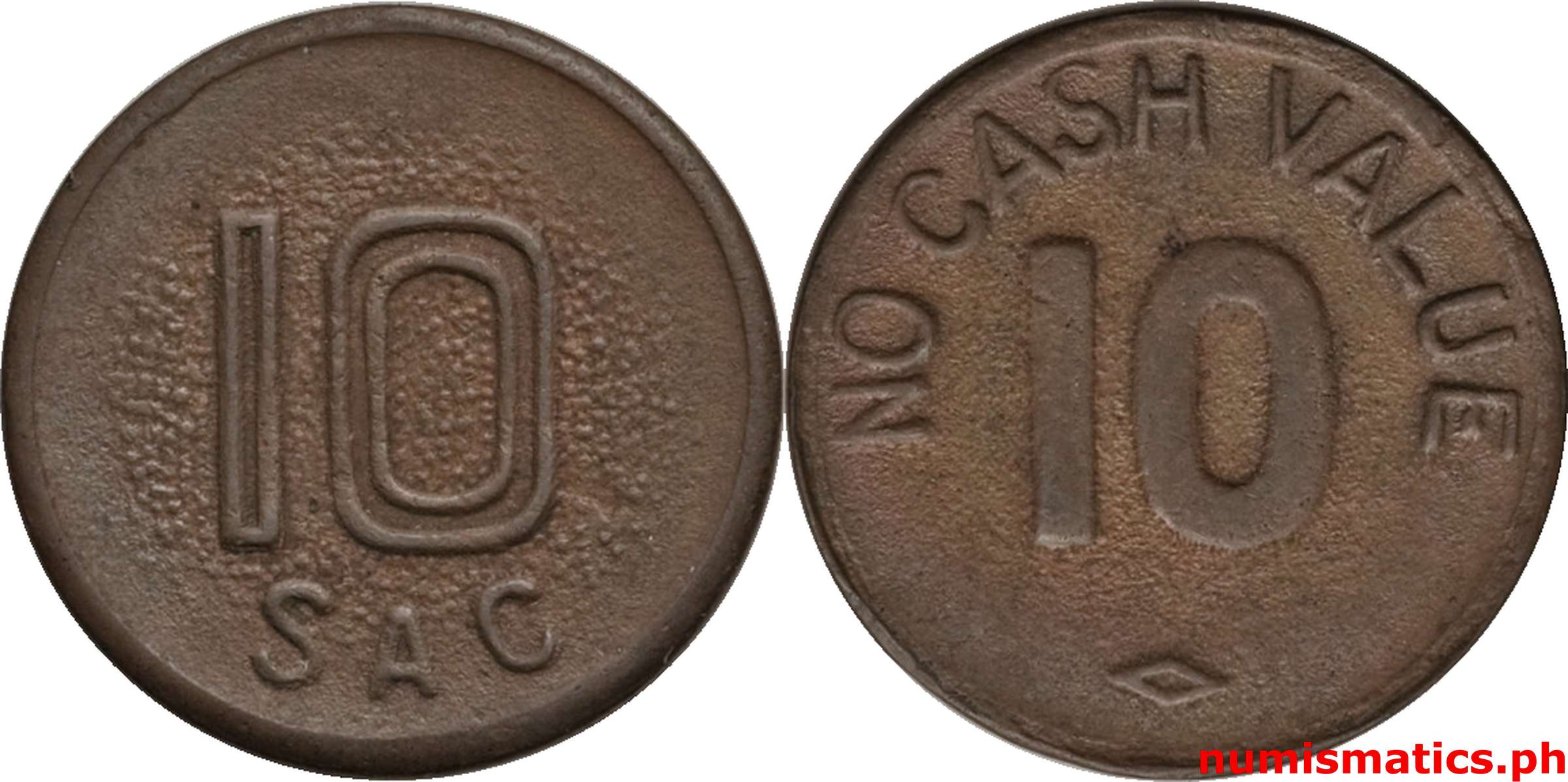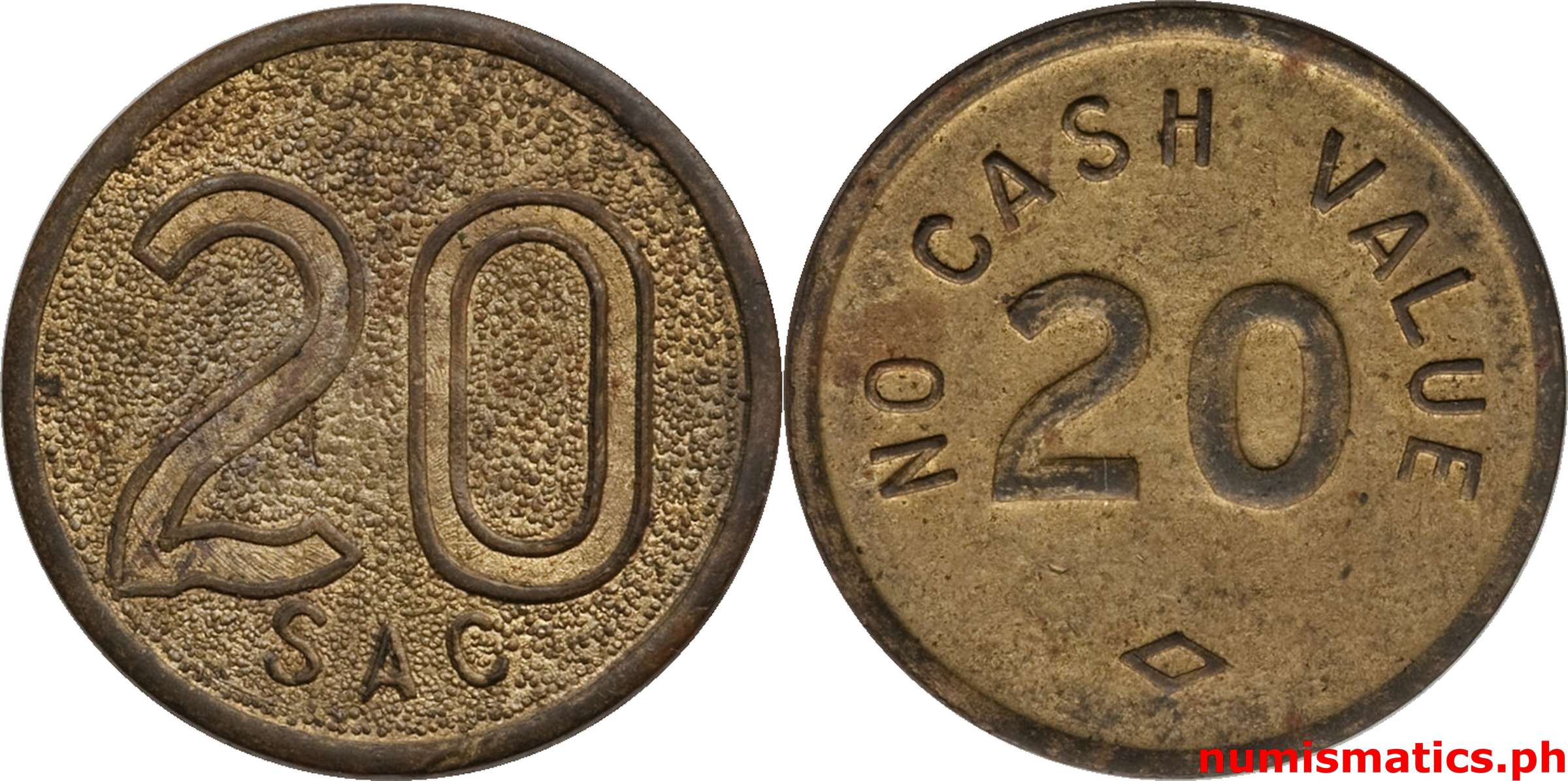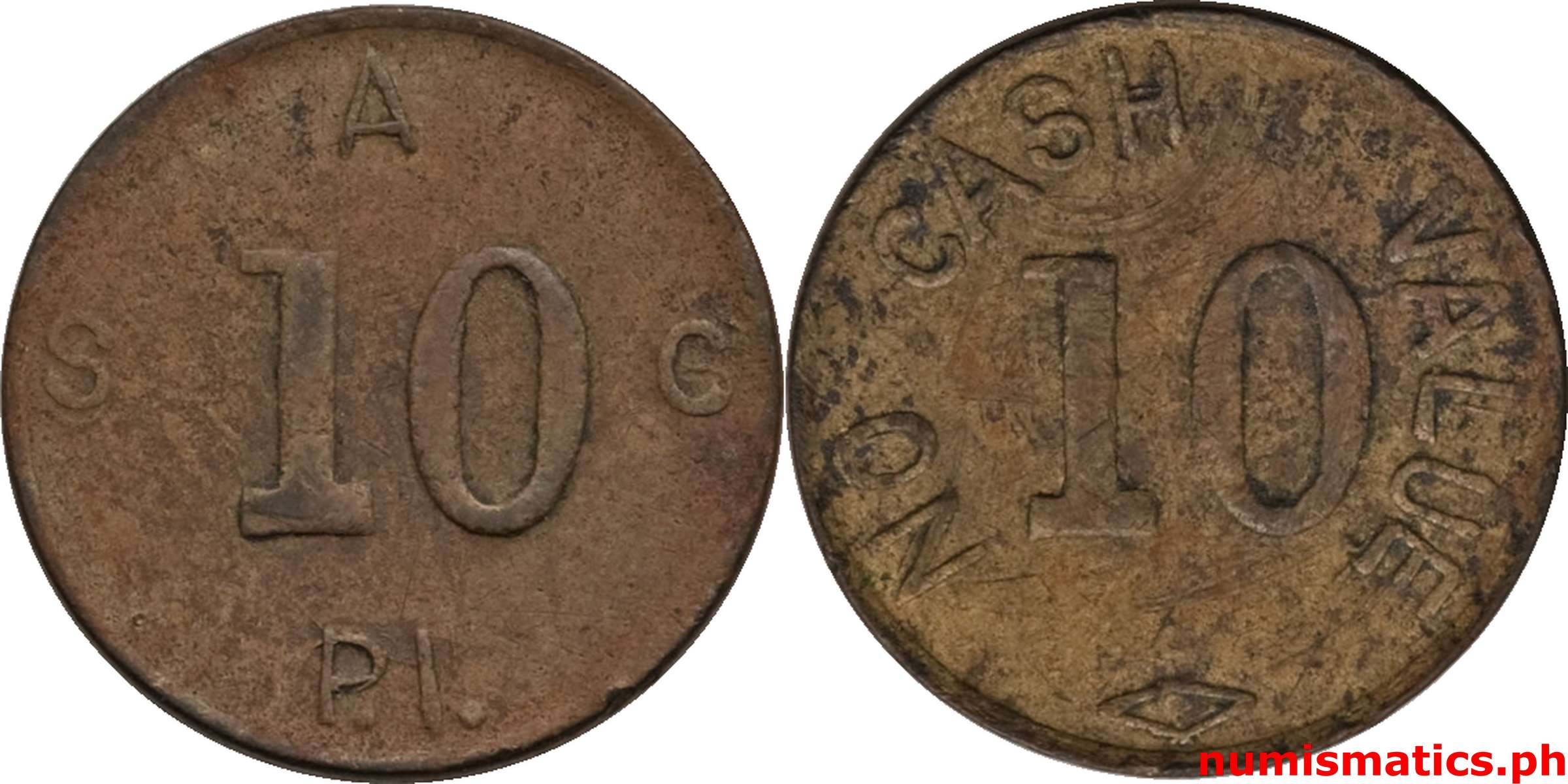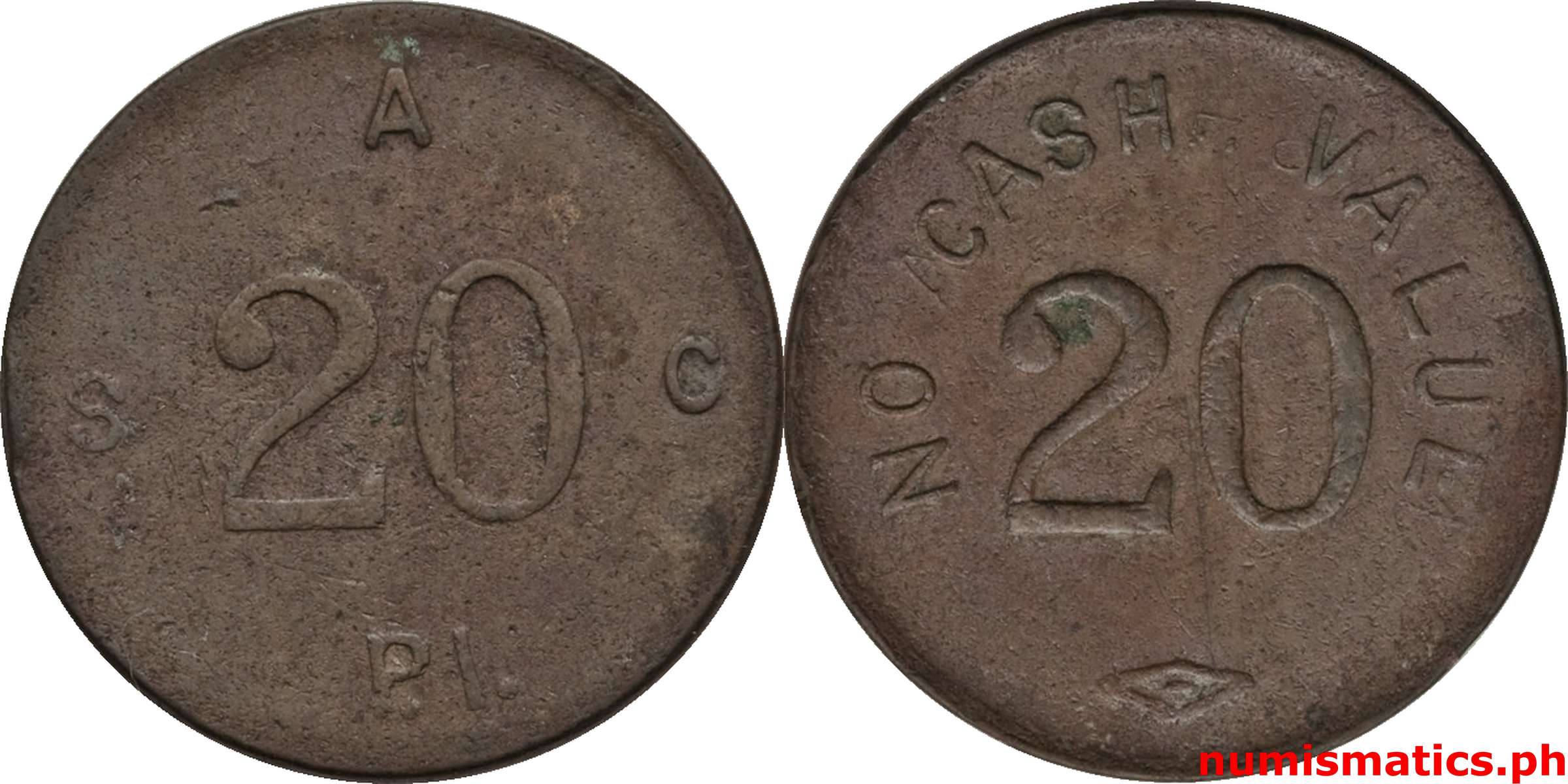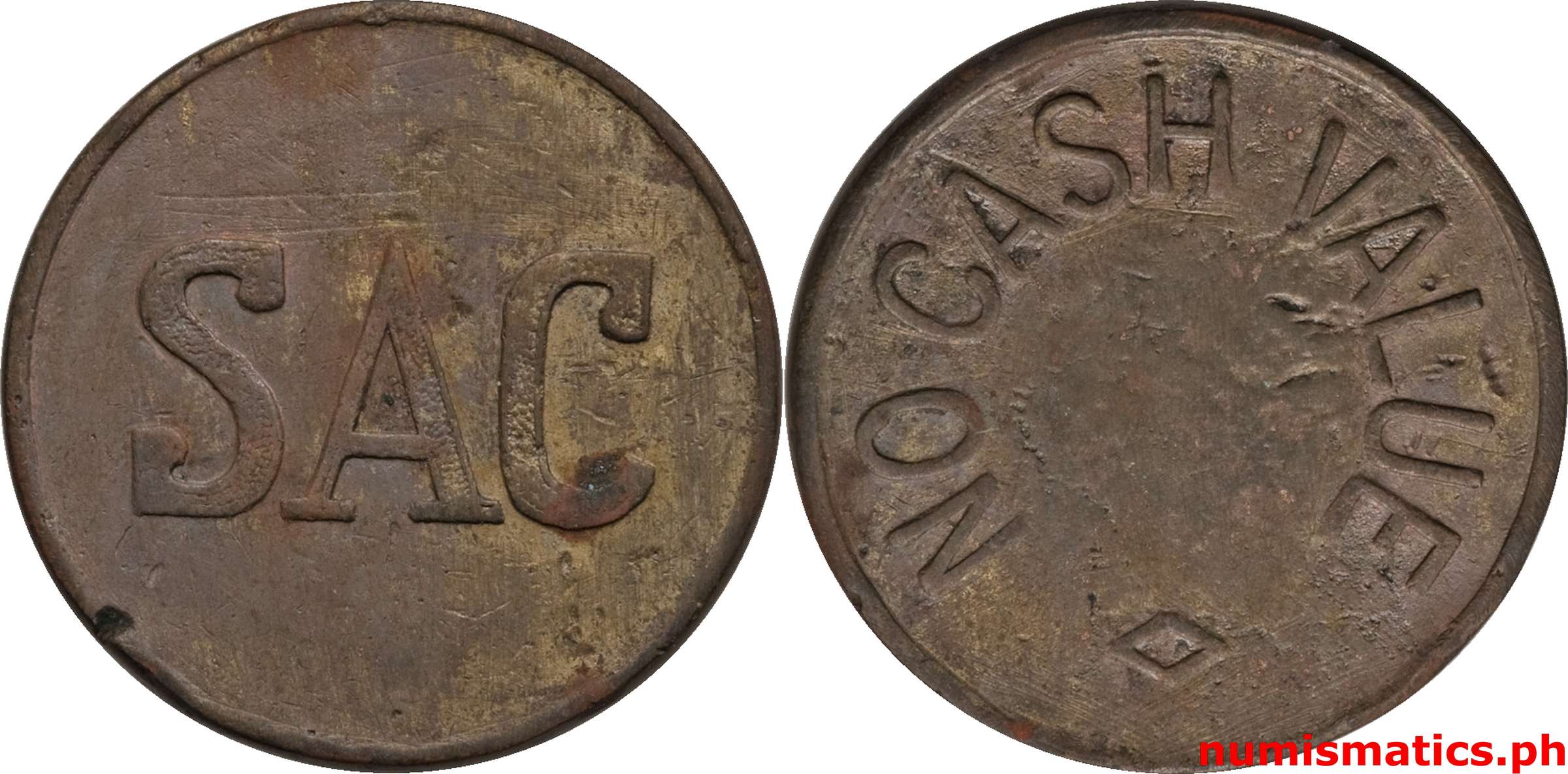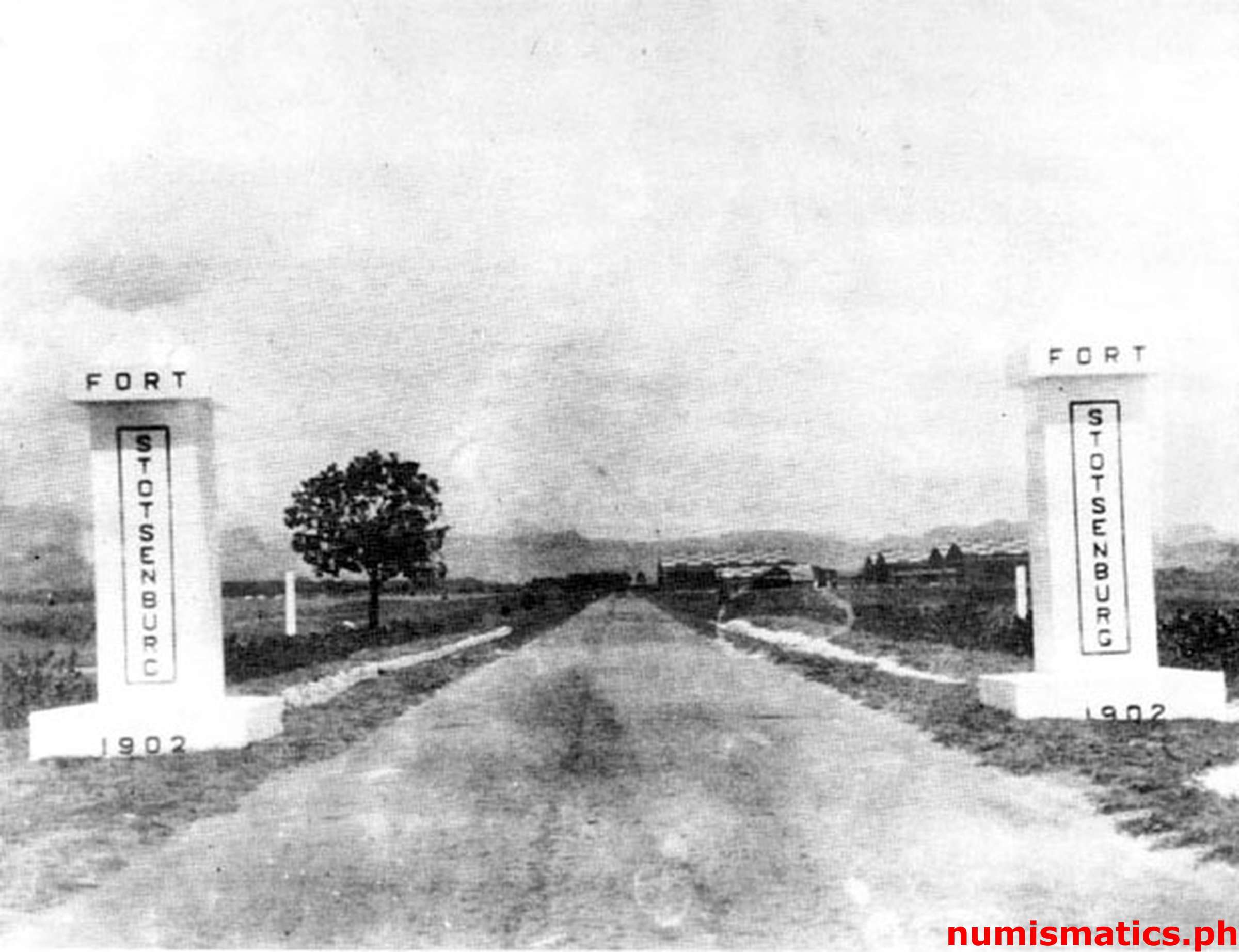Obverse
"(Denomination)" "SAC P.I."
Reverse
Denomination "No Cash Value"
Remarks
Stotsenburg Area Command was deactivated in early 's. Fort Stotsenburg was situated in Sapang Bato, Angeles City and is approximately 80 km north of Manila. This was one of the locations where, under the National Defense Act of , field artillery training was conducted. It was named after Colonel John M. Stotsenburg, a Captain of the Sixth U.S. Cavalry, and a Colonel of the First Nebraska Volunteers who was killed while leading his regiment in action near Quingua, Bulacan, the Philippines on .
